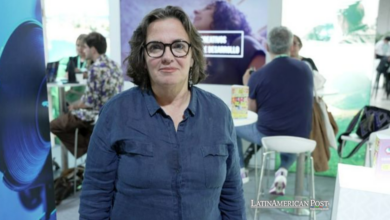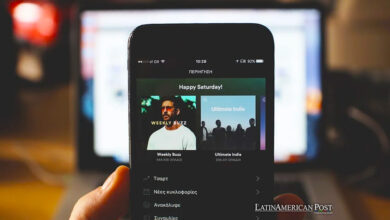Mexica Pre-Columbian Legacy and Splendor Unveiled in Paris

An unprecedented European exhibition, ‘Mexica Offerings and Gods at the Templo Mayor,’ showcases over 500 artifacts, illuminating the Mexica civilization’s depth and debunking common misconceptions about their identity and legacy, connecting past and present across continents.
In the heart of Paris, the Museo Quai Branly is set to unveil a groundbreaking exhibition titled “Mexica Offerings and Gods at the Templo Mayor,” which will run until September 8. This exhibit brings to light more than 500 archaeological artifacts, providing a comprehensive view of the Mexica society, often erroneously referred to as Aztec in European discourse. These artifacts, emerging from Tenochtitlán, the Mexica capital during the 15th and 16th centuries, offer a glimpse into the sophisticated culture of one of Mesoamerica’s dominant empires.
Decades of Archaeological Endeavors
The exhibition is the culmination of decades of archaeological endeavors initiated by Eduardo Matos in 1978 and later spearheaded by Leonardo López Luján in 1996. It presents treasures buried by the Mexica, revealing their rituals, beliefs, and daily life. López Luján emphasizes the Mexica’s obsession with duality, such as night and day, a theme vividly encapsulated by Cipactli, a mythical creature part crocodile, part fish, featured in the exhibit.
The Templo Mayor was the core of Mexica spirituality, the central site for sacrifices and offerings. According to Fabienne de Pierrebourg, another exhibition curator, it was where humanity and deities converged, with offerings crafted to impress both realms. The Mexica believed the universe operated on the sacrifices made to the gods, a belief that infused their cosmology and rituals.
The exhibit showcases exquisite jewelry, musical instruments, and skeletal remains and clarifies the distinction between the Mexica and Aztec peoples, a misconception often perpetuated by European colonizers. The Mexica had established their distinct civilization in the Gulf of Mexico long before the Spanish arrived in 1492, evolving into a sophisticated metropolis after encountering the Europeans.
Adapting to Change
The Spanish conquest brought catastrophic changes, dramatically affecting Mexica demography and cultural practices. Despite these challenges, the Mexica endeavored to preserve their traditions, often adapting to the prohibitions imposed by the colonizers, such as substituting banned amate paper with alternative materials for their art.
The continuous archaeological work at the Templo Mayor site has unearthed significant findings, including offerings with remains of apex predators dressed as warriors, reflecting their importance in Mexica military symbolism. These discoveries highlight the Mexica’s reverence for nature and their belief in the spiritual power of animals.
“Mexica Offerings and Gods at the Templo Mayor” represents a collaborative effort involving the Museo Quai Branly, Mexico’s National Institute of Anthropology and History, and contributions from the Ethnographic Museum of Basel. This exhibition revisits the Mexica’s rich heritage and fosters a deeper understanding of their enduring influence on contemporary Mexican identity and the broader Latin American cultural landscape.
The legacy of the Mexica civilization continues to resonate across Latin America, where its influence permeates various aspects of cultural identity, from art and mythology to social and political structures. Countries like Peru, with its Incan heritage, and Guatemala, with its Mayan legacy, share similar histories of complex pre-Columbian societies and subsequent European colonization.
Resonance Across Latin America
The exhibition’s artifacts and narratives connect with Latin American countries’ efforts to reclaim and celebrate their indigenous pasts. In nations like Mexico and Bolivia, there is a growing recognition of the significance of indigenous contributions to national identity and the global historical narrative.
Furthermore, the Mexica’s story parallels the experiences of other Latin American civilizations, such as the Incas and the Mayans, who faced conquest and colonization yet left behind rich legacies. This shared history of resilience and cultural richness forms a common thread uniting the diverse nations of Latin America.
Also read: Interpol’s Historic Free Concert in Mexico City’s Zócalo
The “Mexica Offerings and Gods at the Templo Mayor” exhibition not only showcases the grandeur of the Mexica civilization but also acts as a bridge connecting Latin America’s past and present. It serves as a reminder of the region’s complex history, the resilience of its people, and the enduring legacy of its pre-Columbian cultures. Through such exhibitions, the stories of the Mexica and other indigenous civilizations gain a prominent place in the global cultural narrative, fostering a greater appreciation of their contributions to humanity’s shared heritage.




